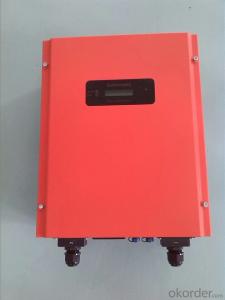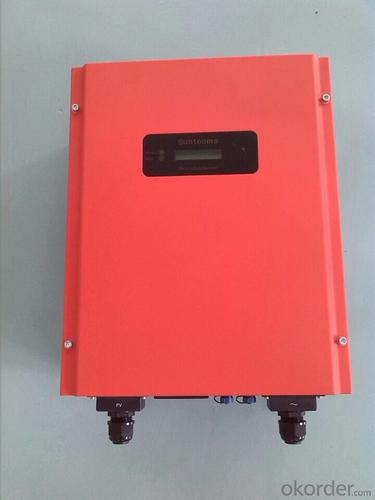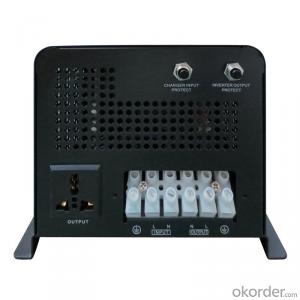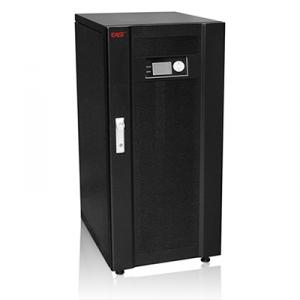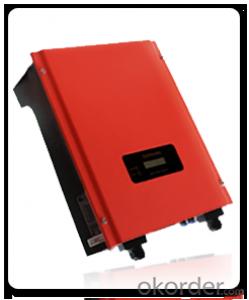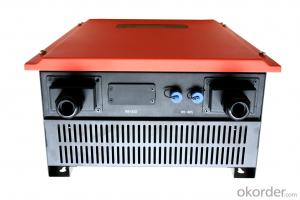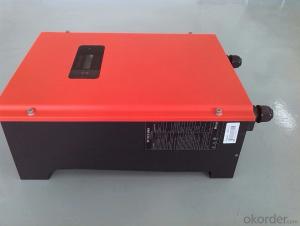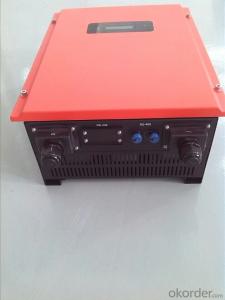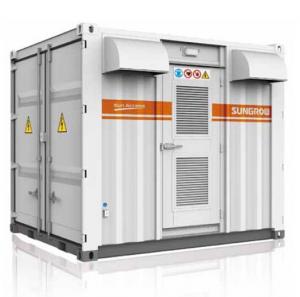Solar Inverter 100 Watt On-Grid Inverter Sunteams 3600/4000/5000
- Loading Port:
- China Main Port
- Payment Terms:
- TT OR LC
- Min Order Qty:
- -
- Supply Capability:
- -
OKorder Service Pledge
Quality Product, Order Online Tracking, Timely Delivery
OKorder Financial Service
Credit Rating, Credit Services, Credit Purchasing
You Might Also Like
The Sunteams 1500 ~5000 series is applicable to various rooftops and small scale photovoltaic grid-
connected power plants. Their nominal output powers are 1.5 kW, 2 kW, 2.5 kW,
3 kW, 3.6 kW, 4 kW and 5kW respectively.
This series is transformerless and has a wide range of MPPT input voltage. Its maximum conversion efficiency and MPPT tracking accuracy
reach 97.6 % and 99.5 % respectively. The maximum DC voltage reaches 550 V. Its multilingual LCD display facilitates easy operation. It ha
s waterproof direct plug-in terminals. It has overvoltage, islanding, short-
circuit, overloading and overheating protection functions. Its IP65 protection degree will ensure it runs well in various tough environments
- Q: How does a solar inverter handle voltage fluctuations from the solar panels?
- A solar inverter handles voltage fluctuations from the solar panels by continuously monitoring the output voltage and adjusting it to maintain a stable and consistent level of voltage. It employs advanced control algorithms and power electronics to regulate and stabilize the voltage, ensuring optimal energy conversion and compatibility with the electrical grid. This helps protect the inverter and other connected devices from damage while maximizing the energy output from the solar panels.
- Q: Can a solar inverter be used for commercial-scale solar installations?
- Yes, a solar inverter can be used for commercial-scale solar installations. In fact, commercial-scale solar installations often require multiple solar inverters to convert the DC power generated by the solar panels into usable AC power for commercial use. These inverters are designed to handle the higher power output and voltage levels typically found in larger solar installations.
- Q: Can a solar inverter be used with solar-powered agricultural equipment?
- Yes, a solar inverter can be used with solar-powered agricultural equipment. A solar inverter is an essential component in a solar power system as it converts the DC (direct current) electricity generated by solar panels into AC (alternating current) electricity that can be used to power various equipment, including agricultural machinery.
- Q: Can a solar inverter be connected to a battery backup system?
- Yes, a solar inverter can be connected to a battery backup system. This allows for the excess solar energy generated during the day to be stored in the batteries for use during times when there is less sunlight or during power outages.
- Q: What is the role of a solar inverter in a solar-powered telecommunications system?
- The role of a solar inverter in a solar-powered telecommunications system is to convert the direct current (DC) generated by the solar panels into alternating current (AC) that can be used to power the telecommunications equipment. It is responsible for ensuring that the energy generated by the solar panels is compatible with the electrical requirements of the system, allowing for efficient and reliable operation of the telecommunications equipment.
- Q: How does a solar inverter affect the overall system efficiency at different temperatures?
- A solar inverter can affect the overall system efficiency at different temperatures by adjusting its power conversion efficiency based on the temperature conditions. In hot temperatures, solar inverters can experience lower conversion efficiencies, resulting in decreased overall system efficiency. This is due to increased internal resistance and heat losses in the inverter components. On the other hand, in colder temperatures, the inverter can operate more efficiently, as lower temperatures generally lead to reduced internal losses and improved performance. Therefore, the temperature conditions can have an impact on the efficiency of a solar inverter and subsequently affect the overall system efficiency.
- Q: How does a solar inverter handle electromagnetic interference?
- A solar inverter handles electromagnetic interference by utilizing filters and shielding techniques to minimize the impact of external electromagnetic disturbances. These measures help ensure that the inverter operates efficiently and reliably, without any significant disruption caused by electromagnetic interference.
- Q: Are there any government incentives or rebates available for solar inverters?
- Yes, there are various government incentives and rebates available for solar inverters. These incentives vary from country to country and even within different regions. They can include tax credits, grants, and rebates offered by federal, state, or local governments. It is recommended to check with relevant government agencies or consult with a solar installer to determine the specific incentives available in the desired location.
- Q: What is the maximum output voltage of a solar inverter?
- The maximum output voltage of a solar inverter depends on various factors such as the inverter model, design, and specifications. However, in general, the maximum output voltage of a solar inverter is typically around 230-240 volts for residential or commercial applications.
- Q: What is the temperature range for optimal operation of a solar inverter?
- The temperature range for optimal operation of a solar inverter typically falls between 0°C (32°F) to 40°C (104°F).
Send your message to us
Solar Inverter 100 Watt On-Grid Inverter Sunteams 3600/4000/5000
- Loading Port:
- China Main Port
- Payment Terms:
- TT OR LC
- Min Order Qty:
- -
- Supply Capability:
- -
OKorder Service Pledge
Quality Product, Order Online Tracking, Timely Delivery
OKorder Financial Service
Credit Rating, Credit Services, Credit Purchasing
Similar products
Hot products
Hot Searches
Related keywords
